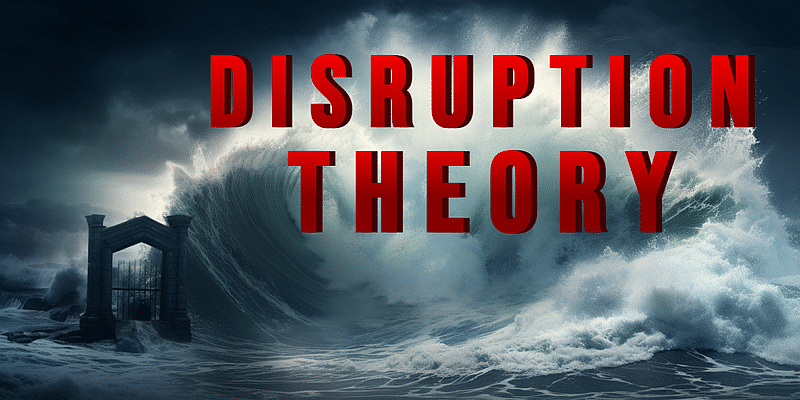
As we witness the shattering of traditional business models by audacious entrants like Uber, which reshaped urban transportation, Netflix, that transformed our viewing habits, and the iPhone, which revolutionised communication, a common denominator emerges – disruption. A fresh contender in this arena, ChatGPT, is charting an exciting trajectory in the tech sector, challenging stalwarts like Google. However, ‘disruption’ is more than just a modern-day jargon synonymous with evolution and change. It’s a critical theory underpinning business and economic dynamics that govern the ascend and descend of corporate entities.
The concept of disruption signifies an instance where an existing product or service faces dethronement, courtesy of a pioneering, often radically different alternative. This contender either zeroes in on an overlooked or underserviced market segment or brings a more accessible, affordable, or convenient solution to the table. The newcomer need not excel on all fronts, but must essentially address the foremost needs of its targeted audience.
But, what stops the existing products or services from mutating to withstand these fresh challenges? The answer lies within the complex web of corporate structures, budget allocations, and market forces. Big companies, tethered by the immense gravitational pull of their prevalent markets and an extensive customer base, primarily focus on amelioration rather than radical innovation.
The fascinating tussle between IBM and Compaq in the 1980s exemplifies this principle. While IBM serviced large corporates with their high-performance disk drives, Compaq ventured into the home segment, offering cost-effective, though less efficient drives. Despite initial indifference due to its distinctive customer focus, Compaq gradually improved product performance without affecting the cost, leading to its eventual triumph.
The potent theory of disruption was first introduced by Clayton Christensen, a noted professor at Harvard Business School, through his pathbreaking book ‘The Innovator’s Dilemma’ in 1997. Despite a modest initial response, the book evolved to become a revered manual for aspiring entrepreneurs and startup enthusiasts over the decades.
Christensen elucidated two potential strategies for disrupting an existing product: concentrating on the ‘low-end’ market, usually disregarded by existing solutions due to low-profit margins, or focusing on a budding market with unique demands unmet by prevalent solutions. Both strategies aim to build a dedicated consumer base.
In summary, disruption theory provides a beacon of hope for startups, even when they find themselves in a face-off with more established, sizable competitors. It acts as an alarm bell for the management of incumbent companies to consider startup threats seriously, especially those eyeing new or neglected markets.
As we venture further into the 21st century, disruptive innovation continues to mold industries and redefine customer expectations. Amidst swift technological progress and fluid market trends, it’s imperative for both startups and established firms to grasp, adapt, and implement disruption theory’s principles to endure, flourish, and potentially reshape their industries’ contours. The saga of disruption is still being written, and those who comprehend its true meaning are well-positioned to script the forthcoming narrative.
.thumbnailWrapper
width:6.62rem !important;
.alsoReadTitleImage
min-width: 81px !important;
min-height: 81px !important;
.alsoReadMainTitleText
font-size: 14px !important;
line-height: 20px !important;
.alsoReadHeadText
font-size: 24px !important;
line-height: 20px !important;











